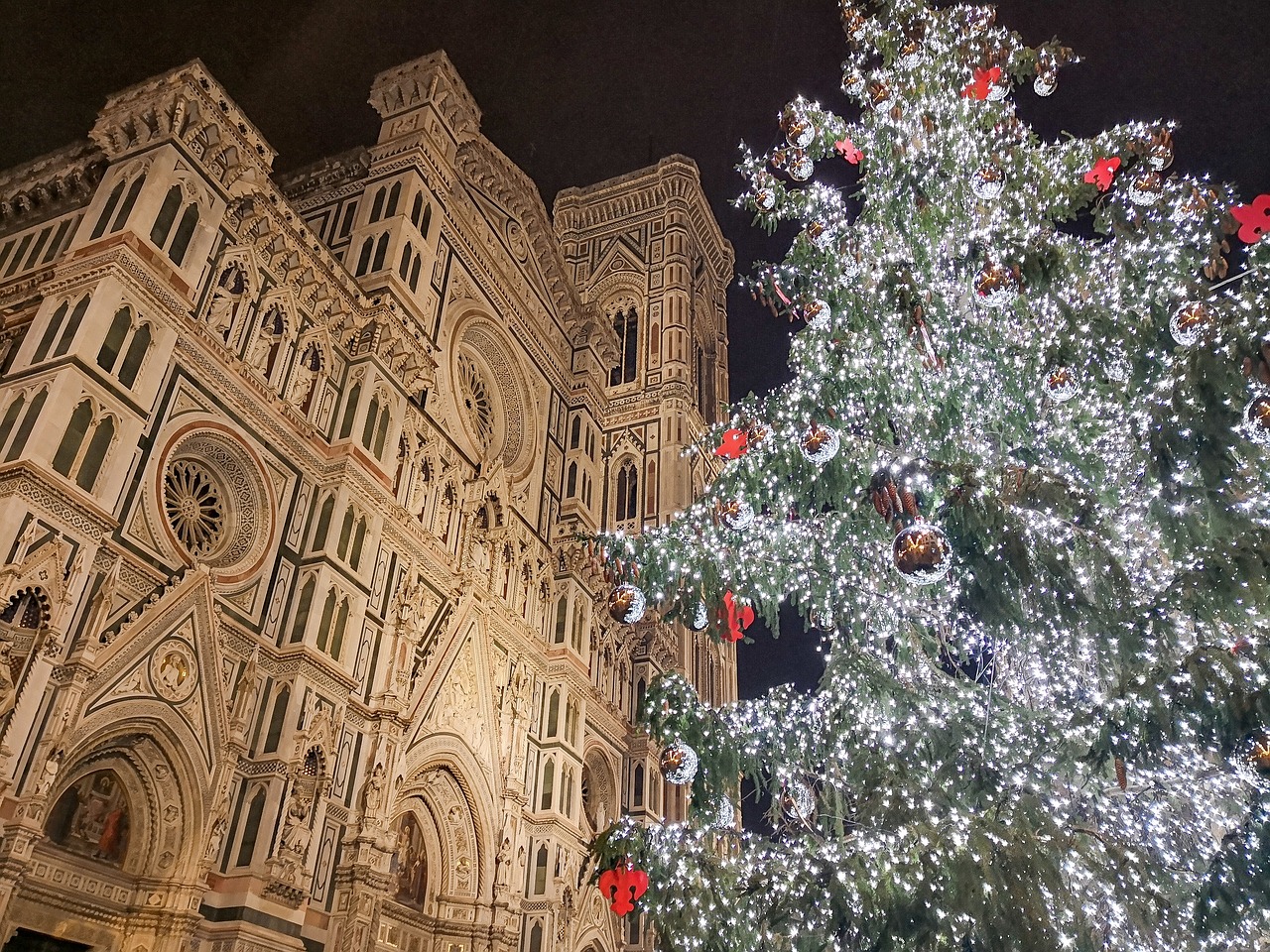
Italy is home to some of the most enchanting and diverse Christmas traditions, reflecting its regional cultures and history. With customs that vary from north to south and foods that celebrate local flavors, Christmas in Italy offers a rich blend of festivities, foods, and folklore that captures the essence of Italian culture.
Italian Christmas Traditions and Celebrations
Advent Season
In Italy, Advent marks the beginning of the Christmas season, with Advent calendars and wreaths becoming popular. In some parts of the country, like Trentino-Alto Adige, small markets pop up where locals can buy crafts, holiday treats, and decorations.
Saint Nicholas Day (December 6)
Northern Italy, particularly in the region of Lombardy, observes St. Nicholas Day on December 6, honoring the saint with special prayers and treats for children. This day often includes small gifts, candies, and pastries.
The Feast of the Immaculate Conception (December 8)
December 8 marks the Feast of the Immaculate Conception and is a public holiday in Italy. Many Italians decorate their homes and prepare nativity scenes on this day. In cities like Rome, elaborate events and masses celebrate this occasion.
Nativity Scenes (Presepi)
Presepi, or nativity scenes, are an integral part of Italian Christmas. Naples is known for its handcrafted nativity figures, ranging from simple figures to complex miniature villages.
Christmas Eve (La Vigilia)
La Vigilia, or Christmas Eve, holds great significance in Italian culture, with families gathering for a special meal. Many Italians observe the “Feast of the Seven Fishes,” where they serve a variety of seafood dishes, a tradition especially popular in southern Italy.
Christmas Day (Il Giorno di Natale)
On Christmas Day, families in Italy gather to exchange gifts and share a large meal. This celebration is often quieter than in other countries, focusing on family and faith. Attending Mass is a common tradition, followed by a meal featuring regional specialties.
Santo Stefano (December 26)
The day after Christmas, known as Santo Stefano, is also a holiday in Italy, especially in northern and central regions. Italians use this day to visit extended family and friends or attend another Mass, making the celebration last even longer.
Epiphany and La Befana (January 6)
Epiphany, or La Befana Day, brings the Christmas season to a close. According to legend, La Befana, an old woman, flies on her broomstick to deliver gifts to children. This celebration is particularly festive, with parades and events in cities like Rome and Florence.
Regional Christmas Celebrations from North to South
Northern Italy Christmas Traditions
In the Italian Alps, where the season is marked by snow-covered villages, locals celebrate with Christmas markets, skiing events, and special festivals. Traditional dishes include hearty stews and polenta-based meals to keep warm.
Central Italy Christmas Celebrations
In Tuscany and Umbria, Christmas celebrations are marked by lavish feasts, truffle-based dishes, and elegant roasts. Cities like Florence host large markets with artisanal crafts and holiday music.
Southern Italy Festivities
Southern Italy’s Christmas celebrations bring a festive flair, particularly in Naples, where elaborate nativity scenes and seafood feasts take center stage. Calabrian and Sicilian towns light up with colorful decorations, music, and traditional dancing.
Traditional Italian Christmas Foods and Dishes
Popular Christmas Appetizers
Italian Christmas meals often start with antipasti, including cured meats, cheeses, olives, and seasonal vegetables. Seafood appetizers, particularly in coastal regions, include marinated anchovies, smoked salmon, and shrimp.
Primo Piatto (First Course) Christmas Dishes
The primo piatto varies by region, with pasta or risotto being popular choices. In northern Italy, lasagna or creamy risottos with seasonal mushrooms are common, while central Italy may feature pasta dishes with truffles or hearty soups.
Secondo Piatto (Main Course) Christmas Dishes
Italian main courses vary widely, from roasted meats like lamb or veal to traditional fish dishes on Christmas Eve. In southern Italy, baccalà (salted cod) is often a centerpiece, prepared with tomatoes, olives, and capers.
Traditional Italian Christmas Desserts
Panettone and pandoro are among Italy’s most beloved Christmas desserts, along with regional sweets like struffoli (fried honey balls from Naples), ricciarelli (almond cookies from Tuscany), and mostaccioli (chocolate-spiced cookies from Southern Italy).
Drinks and Beverages of the Season
Popular holiday drinks include vin brulé (mulled wine) and Italian liqueurs like limoncello and amaro, which complement the rich flavors of holiday meals.
Italian Christmas Markets and Festive Events
Famous Christmas Markets in Italy
Italy hosts charming Christmas markets in cities like Bolzano, Florence, and Rome, offering crafts, seasonal foods, and decorations. These markets feature a warm, festive atmosphere with lights, caroling, and artisans showcasing their work.
Seasonal Festivals and Events
From the Living Nativity scenes in Matera to seasonal concerts and parades, Italy celebrates Christmas with a variety of events that highlight local traditions and artistry.
Christmas in Italy for Tourists
Visiting Italy During the Christmas Season
Italy is a fantastic destination during Christmas, with Rome, Florence, and Venice being popular choices for travelers seeking festive markets, beautiful nativity displays, and world-renowned cuisine. Seasonal attractions include ice skating rinks, Christmas lights, and church events.
FAQs on Christmas in Italy
What are Italy’s most famous Christmas foods?
Italy’s famous Christmas foods include panettone, pandoro, struffoli, roasted meats, and seafood dishes like baccalà and octopus.
When does Christmas season start and end in Italy?
The Christmas season in Italy traditionally starts on December 8 and ends with Epiphany on January 6.
What is La Befana, and why is she important?
La Befana is a legendary old woman who delivers gifts to Italian children on January 6. She is a symbol of Epiphany, celebrated in Italy as the end of the Christmas season.

